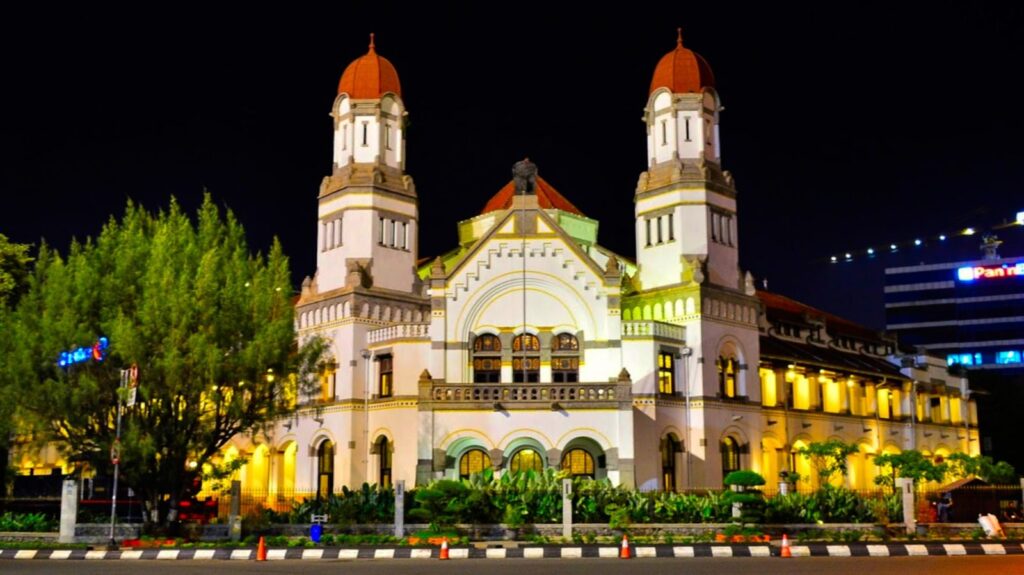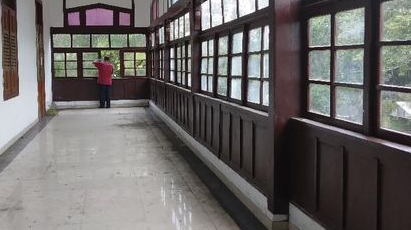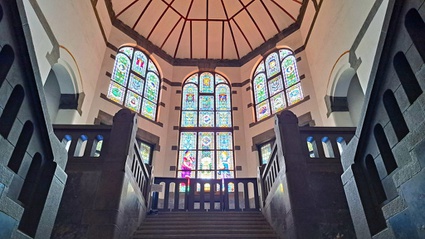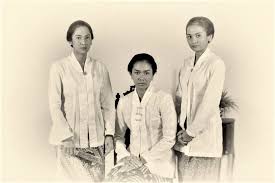It is no longer a secret that Indonesia and Netherlands have a relationship as the Dutch came to Indonesia in the 17th century. This relationship is shown by the Dutch’s legacy, such as a headquarters of the Dutch railway company that has been converted into a museum, old school buildings or churches, and even ghost stories that have merged into local folklore.
The Dutch influence is also seen in Indonesia’s architecture, with many old buildings reflecting European design. Dutch colonial-era schools and universities continue to operate, and some aspects of Dutch legal and administrative practices are still present in Indonesia today. Even Indonesian cuisine has been influenced by Dutch ingredients and cooking methods.
This blend of Dutch and Indonesian cultures shows how historical interactions have shaped modern Indonesia, revealing both the complexities and the richness of its past.
Lawang Sewu: Echoes of the Past and Paranormal Mysteries
One of the famous buildings from the Dutch is Lawang Sewu. Lawang Sewu was built in the 1900s by Ir. P. de Rieu. In Indonesian, Lawang Sewu is translated to “A Thousand Doors” due to its numerous doors and windows. At first, Lawang Sewu was used as headquarters of Dutch railway company, Nederlandsch-Indische Spoorweg Maatschappij (NIS). Over time, Lawang Sewu has become a tourist destination and a museum.
On the other hand, in Japanese forces, Lawang Sewu has been used as prison and torture site during World War II. That is the reason why Lawang Sewu also has a dark history, such as ghost stories and local legends that are becoming legacy across the generations. As a museum, Lawang Sewu offers insights into the history of the Indonesian railway system and the broader colonial history of Indonesia, making it a place of both historical education and mystery.

Lawang Sewu is also a popular spot for people interested in paranormal activities and ghost hunting. Its spooky reputation draws thrill-seekers and those curious about the supernatural. Many visitors come to explore its eerie atmosphere and hear its ghost stories. Guided tours often talk about the building’s haunted history, and some visitors even report strange experiences, making Lawang Sewu a top destination for those looking to encounter the unknown.
According to Radar Madura, the most popular ghost story is about the apparition of a Dutch woman in a long white dress. Legend has it that she roams the halls of Lawang Sewu, her ghostly figure seen gliding through the corridors, often appearing near the old staircases and windows. This haunting tale has become deeply ingrained in local folklore, with many visitors reporting sightings and eerie encounters. The story of the Dutch woman in white adds to Lawang Sewu’s mystique, drawing paranormal enthusiasts and curious tourists who hope to catch a glimpse of her spectral presence.
Wisma Tumapel: A Long History and Mystery in East Java
Moving to East Java, we found Wisma Tumapel, formerly known as Splendid Inn, which is renowned for its haunted reputation. Built in 1928 as a luxury lodging for the Dutch elite, the hotel eventually gained a reputation for being haunted, with numerous ghost stories and eerie experiences reported by guests. Its history as a high-end accommodation for the Dutch and its subsequent ghostly reputation make it a notable landmark in East Java.

The building’s ghostly reputation is often linked to its tumultuous past and architectural design, which some believe contribute to its haunted aura. Visitors and staff alike have reported stories of apparitions, unexplained noises, and sudden drops in temperature.
Despite its spooky reputation, Wisma Tumapel continues to attract curious tourists and paranormal enthusiasts eager to experience its eerie atmosphere. Local stories describe a ghostly Dutch woman often seen in the hallway on the third floor at the back of the building, as well as a ghostly Dutch soldier in full uniform commonly spotted on the stairs.
Cited from Mojok, Wisma Tumapel Malang’s status as a luxury accommodation ended with the conclusion of Dutch colonial rule. It was repurposed as a government building during the Japanese occupation and briefly served as a police detective office around 1944. Later, it was transformed into various uses, including a lodging place for lecturers from Universitas Negeri Malang (Malang University).
However, over time, the building became increasingly deserted and eventually abandoned. Although the exterior still appears sturdy, many parts of the structure are damaged, and the interior is generally dirty and neglected. It is no surprise that Wisma Tumapel is considered one of the eeriest places in Malang and often serves as a subject for mystery content creators.
Museum Pos Indonesia: Mystic Statues and Its Transformation

Located in Jalan Cilaki Number 73, Museum Pos Indonesia is one of the Dutch heritage sites in Bandung. Museum Pos Indonesia was designed by Leutdsgebouwdienst and J. Berger in 1933. This building was formerly named Pos Telegrap dan Telepon (PTT), but now is reallocated as a museum.
This museum was once abandoned and not well-maintained. In 1980, a team was formed to restore and care for the building and its contents. The museum displays items like stamps and bicycles used for delivering mail. Additionally, inside the museum, there are golden letters from the kingdom era and even a statue of a postman delivering mail to the local people.
According to Aksara.co, one of the mysterious stories is about the statues in the museum, which people believe can move during the day. Additionally, there are reports of a ghostly woman appearing to the children around the building.
The museum’s mix of history and mystery attracts many visitors. The preserved building and various exhibits show the history of Indonesia’s postal service, while stories of moving statues and ghostly apparitions add an intriguing touch. Guided tours often share these mysterious tales, making the visit even more interesting. Whether you’re interested in postal history or the eerie stories, Museum Pos Indonesia offers a unique experience.
Toko Merah: Silent Witness to the Tragedy of a Chinese Family
In Jakarta, formerly named Batavia, we can see Toko Merah that was built by Gustaaf Willem baron van Imhoff in 1730. Between 1750 and 1780, Toko Merah served as the residence of several governors and generals. It later transitioned into a campus and dormitory for the Naval Academy.
After that, from 1786 to 1808, it was used as a hotel for officials. In 1809, ownership of the building passed to Anthony Nacare, who made it his private residence. During the period from 1813 to 1851, the ownership of the building changed hands several times until it was eventually acquired by Oey Liauw Kong. He converted it into a shop, leading to the building’s popular name, Toko Merah. In 1993, Toko Merah was designated as a cultural heritage building by the Jakarta Provincial Government. Finally, in 2012, it was repurposed as a venue for conferences and exhibitions.

Toko Merah symbolizes the tragedy faced by the Chinese community, where many Chinese people were massacred in 1740. It began with Adrian Valckenier’s order to the VOC army to kill all the Chinese residents. The brutal massacre lasted for 13 days and claimed the lives of around 24,000 Chinese people.
Until then, according to Aksara.co, Toko Merah continues to give off a mystical aura to those around it. Stories often describe the appearance of a woman in a white dress who is seen at a window. Additionally, people believe that disembodied voices are frequently heard.
Mystical and Historical of Famous Destination Spots
The remnants of Dutch colonial influence in Indonesia are not only seen in the architecture and historical sites but also in the ghostly legends that have become woven into local folklore. From the eerie halls of Lawang Sewu to the haunted corridors of Wisma Tumapel, these buildings tell stories of a past filled with tragedy. Each structure stands as a testament to the complex and often painful history shared between Indonesia and the Netherlands.
These buildings, such as Toko Merah and Museum Pos Indonesia, serve as bridges between the past and present, preserving the memories of colonial times while also embracing the mystical elements that captivate visitors today. The blend of historical significance and paranormal intrigue makes these places more than just relics; they are living parts of Indonesia’s cultural heritage.
In exploring these stories and places, one can see how deeply the Dutch influence is embedded in Indonesian history, architecture, and even in the tales of the supernatural. The continued interest in these places highlights their importance as symbols of a shared and complex past, inviting both reflection and curiosity about the enduring legacies of colonialism and the mysteries they leave behind.
In the process of Indonesia’s development as a nation, these buildings were repurposed and left behind various stories. From history to urban legends and even mystical tales, these narratives have become an inseparable part of how Indonesians view the past.
It is not impossible that hundreds or even thousands of urban legends or historical stories, originating from various corners of the city, hold significant value. These tales are not just remnants of the past but also potential sources of inspiration. They offer insights into cultural and historical contexts that can be leveraged to create new narratives.
Such stories could serve as a rich foundation for creative endeavors, fueling the development of innovative content and projects within the creative industry. By exploring and interpreting these legends, we can uncover unique perspectives and ideas that contribute to the growth and evolution of cultural and artistic expression.
Petricia Putri Marricy
IG: @mricyls
E-mail: petriciamarricy@gmail.com









Wow wonderful blog layout How long have you been blogging for you make blogging look easy The overall look of your site is great as well as the content
I loved as much as youll receive carried out right here The sketch is tasteful your authored material stylish nonetheless you command get bought an nervousness over that you wish be delivering the following unwell unquestionably come more formerly again since exactly the same nearly a lot often inside case you shield this hike
Hi, I’m Jack. Your website has become my go-to destination for expert advice and knowledge. Keep up the fantastic work!
Fantastic site Lots of helpful information here I am sending it to some friends ans additionally sharing in delicious And of course thanks for your effort
Hi i think that i saw you visited my web site thus i came to Return the favore I am attempting to find things to improve my web siteI suppose its ok to use some of your ideas